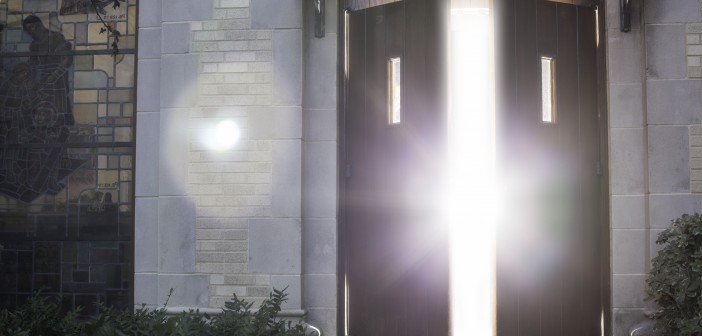How can you best welcome the next newcomer who crosses the threshold of your congregation? Consider Jesus’ call to the disciples. When he said, “Follow me,” at least according to the gospel writer Mark, the disciples did so immediately. So do not wait. Do not wait until your brochure is finished. Do not wait until your website is public. Do not wait until your membership database is up-to-date. Stop procrastinating. The very next newcomer who arrives in your congregation is bearing a promise for you.
You must take time for the newcomer to learn the unique ways of your very particular congregation. What is the history of the way things are done? What is important and why?
Welcoming this newcomer involves three priorities — listening to the newcomer’s questions, facilitating the newcomer’s participation in discipleship practices alongside oldcomers, and taking time for the newcomer to learn the culture and ways of doing things in your church.
Listen to the Newcomer’s Questions
To listen to your newcomer’s questions, you need to find people who have skills to listen well. Newcomer questions may not be what you expect. Some questions may be trivial, some may be very weighty, some may be practical, and some may be deeply theological. Newcomer questions may challenge what you know to be the case in your congregation or in Christianity. But do not be defensive. Their unsettling questions can be a means of grace and a revelation of the image of Jesus.
Facilitate Newcomer Participation
Discipleship is learned through participation in Christian practices. So, ask first, what discipleship practices, apart from Sunday-morning worship services, are central to the life of your congregation? Do you have a prayer ministry? Do you have a mission trip? Do you have an adult Bible study? Do you have a caregiving ministry? Are these practices newcomer-friendly? Can newcomers learn to participate in practices by showing up to the practice? Identify oldcomers within these practices who are willing to facilitate newcomer participation and nondefensively entertain their questions.
Take Time for Learning Your Congregation’s Story
Finally, you must take time for the newcomer to learn the unique ways of your very particular congregation. What is the history of the way things are done? What is important and why? In the telling or retelling of these stories with a newcomer, in the course of engaging in discipleship practices together, the very particular story of the local congregation will become essential to participating in this practice. The practice is local and personal and does not look like any practice anywhere else in the world. What makes it distinct makes it worth learning about.
Ask who among the oldcomers knows the stories of how practices originated and developed in your congregation. What resources are guides for discipleship practices in your congregation? Is the Bible the central resource? Is the congregation’s mission statement the central resource? Is the congregation’s constitution a guiding document? Is a catechism, worship book, or confession of faith a guiding frame for practices? Often dress rehearsals and setups for big events can be an opportunity to teach the history of a discipleship practice in the congregation. Who among the oldcomers can tell this story?
If the first step of designing a newcomer-welcoming process is to welcome the questions of the very next newcomer who crosses the threshold of your congregation, then the three priorities described here will naturally flow. At the same time, it is necessary to welcome what will feel unsettling. To listen to the newcomer questions, facilitate newcomer participation alongside oldcomers, and take time for newcomers to learn the stories and what matters will take courage.
To be a Christian church is for the people under the cross to practice a confession of faith, hope, and love, welcoming newcomers into discipleship practices where faith meets doubt, hope meets despair, and love meets the suffering world. Congregations practice faith as they confess their incompleteness without the newcomer in their midst. Hope becomes tangible in the newcomers who will come and “be-come” members of the congregation. Love becomes tangible as newcomers appear on the threshold of the congregation, weary, broken, and worn, searching for meaning, purpose, identity and new life. Love is the compulsion to welcome these strangers, eager to hear their questions and announcing God’s promise for them and not only for ourselves. This love transforms the congregation’s orientation toward God and the world.
This material is adapted from Jessicah’s book, Wide Welcome: How the Unsettling Presence of Newcomers Can Save the Church, copyright © 2013 Fortress Press. Reproduced by permission of Augsburg Fortress. You may purchase Wide Welcome at Amazon and Cokesbury.
Related Resources:
- Review of Wide Welcome: How the Unsettling Presence of Newcomers Can Save the Church by Ann A. Michel
- Top 10 Learnings about Welcoming Newcomers by Keith Anderson
- Evangelism Today Requires New Wineskins by F. Douglas Powe, Jr.






